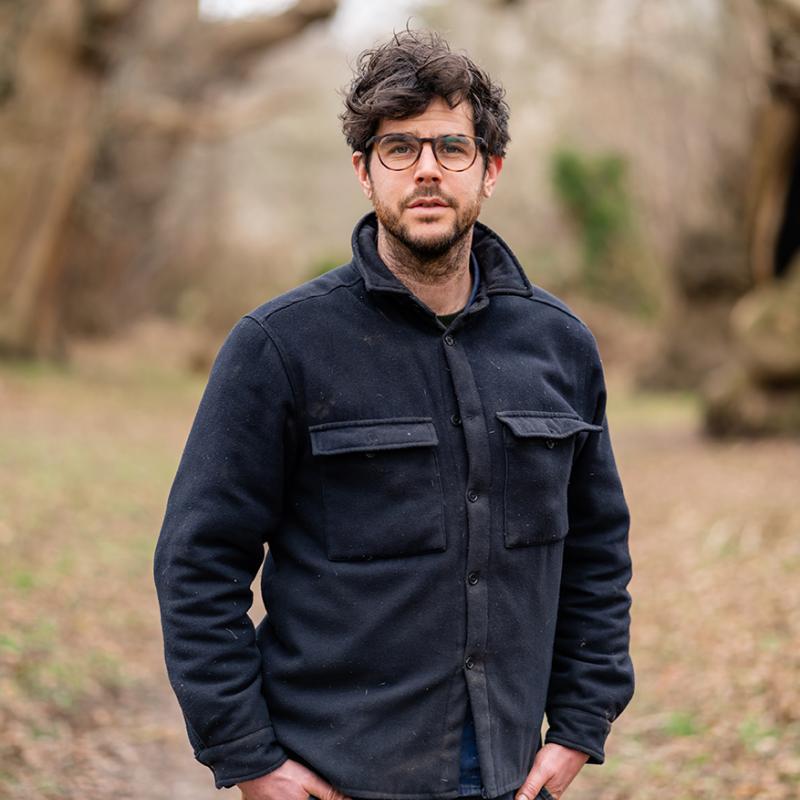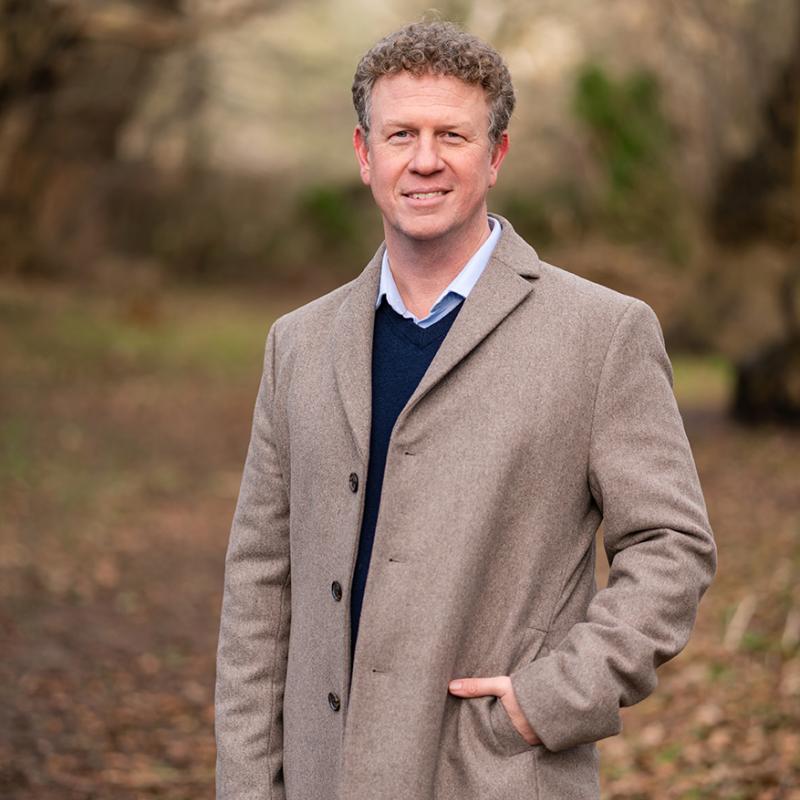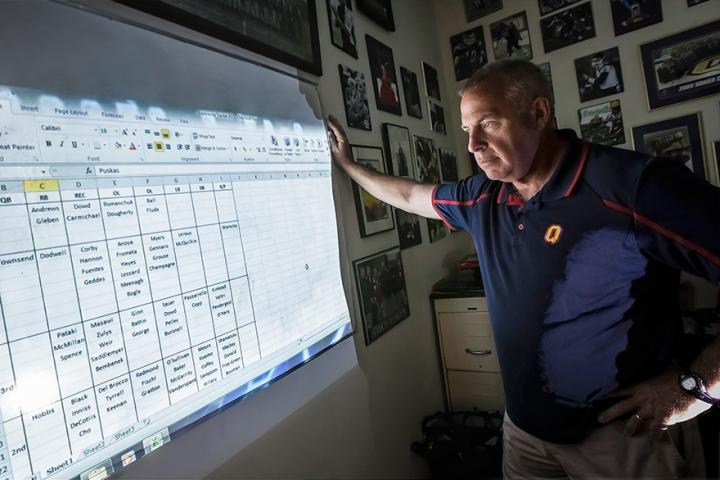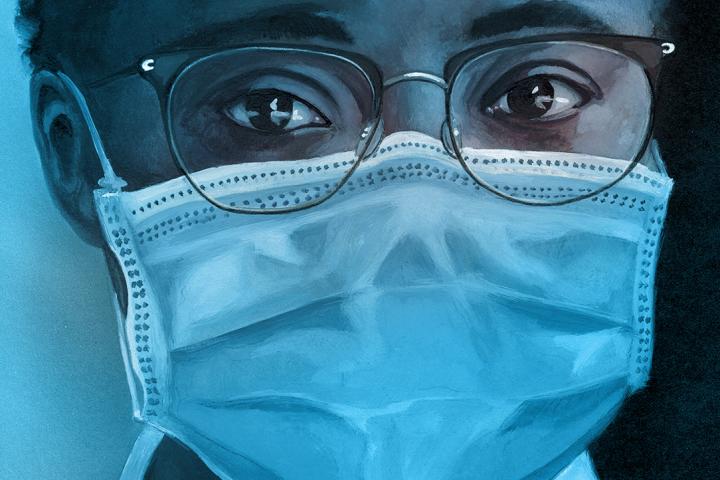If you’ve been to the Bader International Study Centre (BISC) recently, you might have noticed a little more messiness, a little more wildness, surrounding Herstmonceux Castle. There are still the finely trimmed lawns and sculpted hedges, neat rose bushes and colourful perennials, tidy paths through ancient forests and around Folly Pond. But look closer at the 600 acres here and you might also see fallen and rotting trees left to block streams in the wetlands, sussex cattle trudging through the woodlands, wildflowers spreading where they will in the meadows.
It’s all on purpose, says Guy Lucas, the BISC’s head of gardens and estate.
“We’re encouraging scruffiness, really, encouraging a bit of chaos. By letting go of the reins and allowing natural processes to re-establish, this will bring with it disorder.”
The reason for allowing disorder? Biodiversity.
This process of encouraging scruffiness, of purposefully stepping back and letting nature take care of itself, is called rewilding. It’s a form of ecological restoration that can also include the reintroduction of species that have disappeared from an area. The goal is to nurture self-regulatory and self-sustaining ecosystems in order to create more biodiverse habitats.
The United Nations has listed rewilding as one key way to restore ecosystems and combat climate change. In fact, the rewilding efforts at the BISC were used to support Queen’s submission to the 2021 Times Higher Education Impact Rankings, which assess universities against the UN’s Sustainable Development Goals. Queen’s placed first in Canada and fifth in the world in those rankings.
One of the most well-known rewilding projects is happening about an hour’s drive from the BISC at the Knepp Castle Estate. Chronicled in the bestselling book Wilding, the transformation of Knepp turned an ecologically starved 950-acre farm into an area of wildlife abundance.
Although there is a rich variety of plants and animals at the BISC, that biodiversity is nowhere near what it was 400 years ago.
Herstmonceux castle’s rewilding efforts aren’t just supporting a healthier ecosystem, however. They are also strengthening a growing science program. Rewilding is being integrated into the curriculum, students are volunteering to reverse biodiversity losses, and the number of scholars using the area as a living lab is on the rise.
Although there is a rich variety of plants and animals at the BISC, that biodiversity is nowhere near what it was 400 years ago. The two main reasons behind that loss are the same in other parts of the country and the world: extinctions and invasive species.
At one time, animals such as pine martens, wolves, beavers, and lynx all thrived in this region. However, eventually, each one was hunted to extinction or disappeared due to loss of habitat. The introduction of non-native plants and animals like rhododendron and American mink coincided with those losses to disastrous effect. Soils were poisoned, diseases were spread, and native flora and fauna were wiped out.
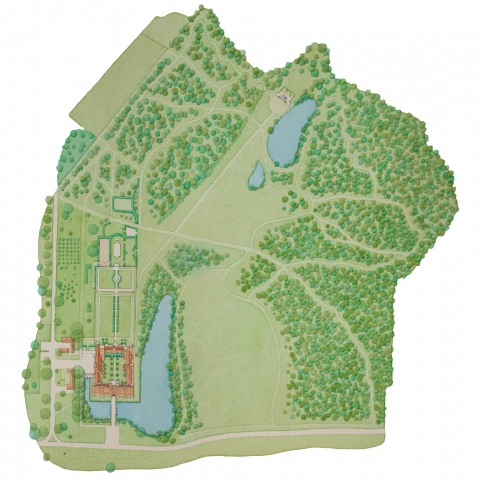
The estate of Herstmonceux Castle, from above.
Guy Lucas isn’t one to despair, though. The East Sussex native grew up in a household that fostered a love of nature, and his passion for the outdoors led him to a career with conservation at its heart. Often undertaking traditional estate management techniques during his six years at the castle, his new focus on rewilding has caught the interest of the wider community, including the BBC. In December, BBC Radio 4’s hugely popular program Gardeners’ Question Time visited to showcase the BISC’s biodiversity and sustainability efforts.
Mr. Lucas’s passion has translated to a number of rewilding strategies at the BISC. Last year, for instance, he and his small team introduced Sussex cattle to the property. Not unlike the now-extinct aurochs that once grazed these lands, Sussex cattle are a hardy, placid species that have adapted to the often wet and cold winters common to this area, says Mr. Lucas. “They’re now on half of the estate, chomping through bramble and bracken and pushing over trees, clearing areas for new trees to grow, removing that dominant vegetation so woodland flowers can establish.”
Mr. Lucas is also hoping to bring in a small group of pigs for a few months every year to similarly assist with this regeneration. They will help control overly dominant vegetation and the damaging, non-native species that were planted in the Victorian era like rhododendron and cherry laurel, as well as expose dormant seed beds within the soil by turning over the ground using their snouts.
Meanwhile, the BISC’s estate crew is doing some of that removal themselves as they wait for native plants like hazel, hawthorn, and English oak to return. They’re also establishing and maintaining 20 acres of wildflower meadow on the estate using a four-acre species-rich plot as the primary seed source they affectionately call the “Mother Meadow.” Those wildflowers feed bees, butterflies, invertebrates, and small mammals.
So far, many of these rewilding projects appear to be working, says Mr. Lucas. “We’re starting to see these little clues that we’re doing the right thing.” They’ve seen plants like southern marsh orchids and whirl grass return, for example. They’re also finding more hazel dormice, which are a protected species in the U.K., as well as the white-letter hairstreak butterfly and yellow wagtail birds. “The changes in the floral diversity should lead to greater numbers of overall biodiversity, which we’ll be able to confirm with future surveys.”
Mr. Lucas is quick to point out, however, that his team is just getting started with rewilding. To really take it to the next level, they’ll need the help of students, scholars, and researchers, he says. And they’re already getting it.
Dr. Simon Coppard had big ambitions for the science program at the BISC when he was hired as its science co-ordinator and biology lecturer in 2020.
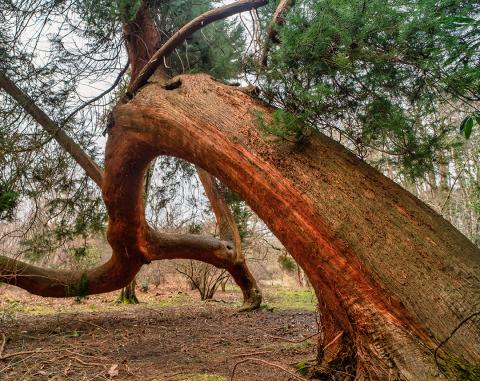
I think this generation cares more about the environment than any other, but often they’re at a loss to know what to do and how they can make a difference.
“I wanted to move the science curriculum to be more skills-based, and to actually use the estate to build connections between the environment, species monitoring, and inquiry-based labs,” he says. “We have such a diverse array of habitats here, and I wanted to give students an opportunity to contribute to the ecology and the environment that surrounds them, to give them a sense of stewardship and that they made a difference while they were here.”
Together with Mr. Lucas, Dr. Coppard quickly realized the rewilding projects happening on the estate would be a great way for students to make that difference. So, he has tried to include students in those projects whenever possible and even incorporated nature-led conservation into the curriculum.
In his Biology 103 course, Organisms to Ecosystems, for example, rewilding is front and centre. Early in the course, students visit the Knepp Castle Estate to see how rewilding can be successful. When they return to the BISC, they complete biodiversity surveys in the meadows and the woodlands to understand what’s growing and living there. Then, in small groups, students propose rewilding projects for the estate. One recent proposal suggested introducing pine martens, which could feed on the dominant non-native grey squirrels on the property. This, in turn, could possibly allow the reintroduction in the southeast of the country of red squirrels, which have been declining in the U.K. since their grey cousins arrived.
Dr. Coppard is keen to get all students involved no matter what they are studying. “I think this generation cares more about the environment than any other, but often they’re at a loss to know what to do and how they can make a difference,” he says.

The Observatory Science Centre
One option is to join the volunteer group he and Mr. Lucas launched called Ecology and Land Stewardship. It’s been playing an important role in the BISC’s rewilding efforts. One project had students monitoring dormice to see where they’re living, for example. Another had students removing invasive plants from a wetland area to allow native ones to take over.
Dr. Coppard is also an avid beekeeper and is eager for students to help monitor the bees on the estate, learn about the stresses they are under, and perhaps even reintroduce native short-haired bumblebees to the area.
But it’s not just BISC students who are helping rewild the property. Dr. Coppard is encouraging researchers and scholars from other universities to get involved. For example, he is a co-investigator on a project called Environments of Change led by Professor Steven Bednarski from the University of Waterloo. This transdisciplinary project is exploring how the environment in Sussex has been altered since the Middle Ages. The findings could inform how the BISC and surrounding areas use rewilding to cope with climate change.
“My aim for all of this is that I really want to encourage academics and colleagues from Queen’s and other universities to come here,” says Dr. Coppard. “We want to build a vibrant teaching community, but also a vibrant research community. [The more we] can increase our collaborative efforts to get people from different disciplines involved, the more we’ll be able to achieve here.”
Mr. Lucas is looking forward to building those collaborations, too. The more specialists and students who get involved, the more likely his vision of a rewilded, ecologically thriving BISC comes true, he says. “In my mind’s eye, five or 10 years from now, I see a landscape with more trees, more wetlands, lots of flooded areas, and trails that people can use to experience it all. I see a small group of wild pigs, a permanent herd of cattle moving through the whole estate.”
He also hopes more species naturally arrive, like pine martens, and that he and his team can introduce others, such as beavers, in a big way.
“With any luck, there will be a lot of chaos,” he says.

